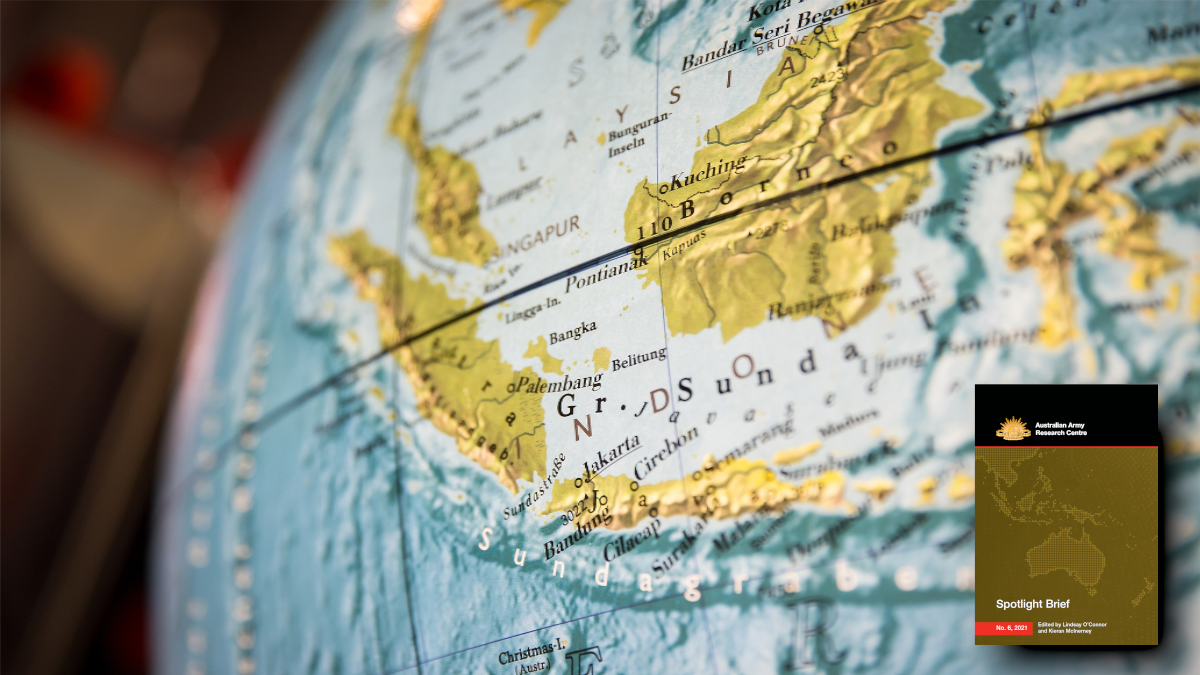The content in this article is an extract of Spotlight Brief 6/21.
Toward a Trusted Autonomous Systems Offset Strategy: Examining the Options for Australia as Middle Power
Australian Army Research Centre – Apr 2021
Austin Wyatt and Jai Galliott’s work presents an examination, grounded in theory, of the feasibility of the Army adopting a Trusted Autonomous System as part of an offset strategy. For Australia, the core purpose of an offset strategy is to generate an asymmetry of capability. By maintaining a comparative edge in Trusted Autonomous Systems Australia could invalidate
the conventional superiority of rival militaries and compensate for its comparative weakness. This can create a strategic advantage that secures a niche over the long-term. Wyatt and Gaillott argue that this is achievable for the ADF over the medium term. However, the Australian Government must invest more deeply in developing the capacity of the domestic arms industry to innovate in identified priority areas for capability. They conclude that the broader Australian defence community needs to instigate a meaningful cultural shift to prioritise and support creative risk-taking in innovation.
Related:
‘Developed By Australia & Popularized By the UK, US, Marines Test Lethal Mini ‘Grenade’ Drones That Can Attack in Swarms,’ The EurAsian Times, 10 Jul 21
‘The Future of War and Deterrence in an Age of Autonomous Weapons,’ TRT World, 17 Jun 2021
‘Athena AI Helps Soldiers on the Battlefield Identify Protected Targets,’ Create, 26 Apr 21
‘Looking to 2040: The Swarm Advantage,’ Australian Army Research Centre, 26 Mar 21
‘The Artificial Intelligence ‘Backseater’ in Future Air Combat,’ The Strategist, 05 Feb 21
Risks and Benefits of Autonomous Weapon Systems: Perceptions among Future Australian Defence Officers
Journal of Indo-Pacific Affairs – Nov 2020
Artificial intelligence, Autonomous Weapon Systems, and uncrewed platforms will play a crucial role in the ADF’s capacity to maintain a capability edge over potential adversaries in the Indo-Pacific. Jai Galliott and Austin Wyatt survey over 800 officer cadets and midshipmen from the Australian Defence Force Academy to determine their attitudes towards being deployed alongside these technologies. The data illustrate that there is a significant relationship between the perceived level of independence of the ‘robot’ and a willingness to work with them. When the Autonomous Weapon Systems were either entirely under human control or were limited to preprogramed functions, the vast majority of respondents were ‘willing’ or ‘somewhat willing’ to deploy alongside them. However, there was a significant negative shift when the weapons could exercise preprogramed decision-making in the use of force. Of the three forces, Army had the highest level or opposition to deploying alongside Autonomous Weapon Systems. This is the first study to canvas military perspectives on these technologies, with Galliott and Wyatt distilling several critical recommendations for ADF training from the data.
Related:
‘Creating Reliable Robotic Weapons,’ The Australian, 28 Jul 21
‘Militaries Are Planning for an Autonomous Revolution. What if the Tech Isn’t Up to It?’ The Diplomat, 13 Jan 21
‘Symposium Accelerates Trusted Autonomous Systems,’ Australian Defence Magazine, 28 Apr 21
‘Breaking: Boeing Carries Out First Flight of Australia-Made Robotic Jet,’ National Defense, 02 Mar 21
‘Australia Invests in Advanced Maritime Weapons, Minehunters,’ Defense News, 26 Jan 21
A Southeast Asian Perspective on the Impact of Increasingly Autonomous Systems on Subnational Relations of Power
Defence Studies – Apr 2021
This article explores how the integration of uninhabited systems and Artificial Intelligence will influence rising powers in Southeast Asia. Austin Wyatt notes that militaries in these states maintain legitimate and long-standing roles in the domestic use of force. As such, if these militaries acquire Autonomous Weapon Systems it should be assumed that they will be deployed in subnational exercises of power. There are clear similarities between the perceived benefits of deploying these technologies for internal security/ law enforcement and in warfare. They offer substantial resource efficiencies, reduced risk for officers, and a greater capacity to conduct long-term surveillance and complex data analysis. Wyatt acknowledges that there is little evidence that law enforcement agencies have utilised autonomously operating systems to date, however they (Indonesia, Singapore, etc.) have deployed remote operated systems, passed legislation allowing for their use in broader contexts, and expressed interest in using Artificial Intelligence more generally. He believes that it is only a matter of time before Autonomous Weapon Systems are used for surveillance, border security, and internal repression.
Related:
‘Drone Target: Police Using UAVs to Catch Bad Drivers and Ticket them in Poland,’ Carscoops, 26 Jul, 21
‘Ethics Part of Curriculum as Singapore Inks AI Training Partnership with Google Cloud,’ ZD Net, 07 Jul 21
‘Robots at War: The Future for Autonomous Systems at Sea in the Indo-Pacific,’ Observer Research Foundation, 24 Mar 21
‘Drones with ‘Most Advanced AI Ever’ Coming Soon to your Local Police Department,’ Forbes, 03 Mar 21
‘Indian Army Employing Autonomous Weapon Systems,’ South Asia Monitor, 16 Jan 21




